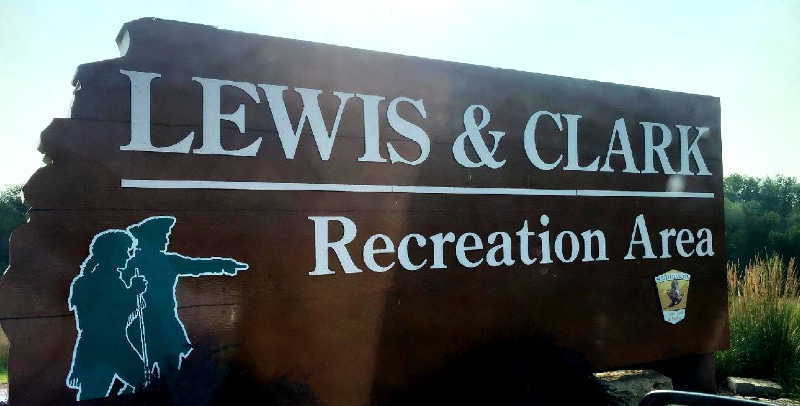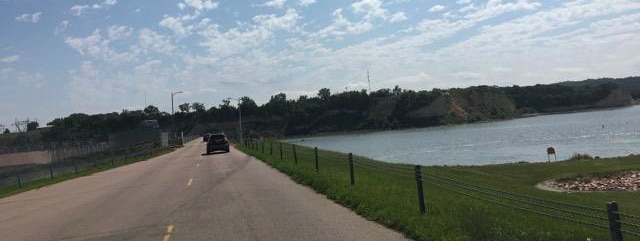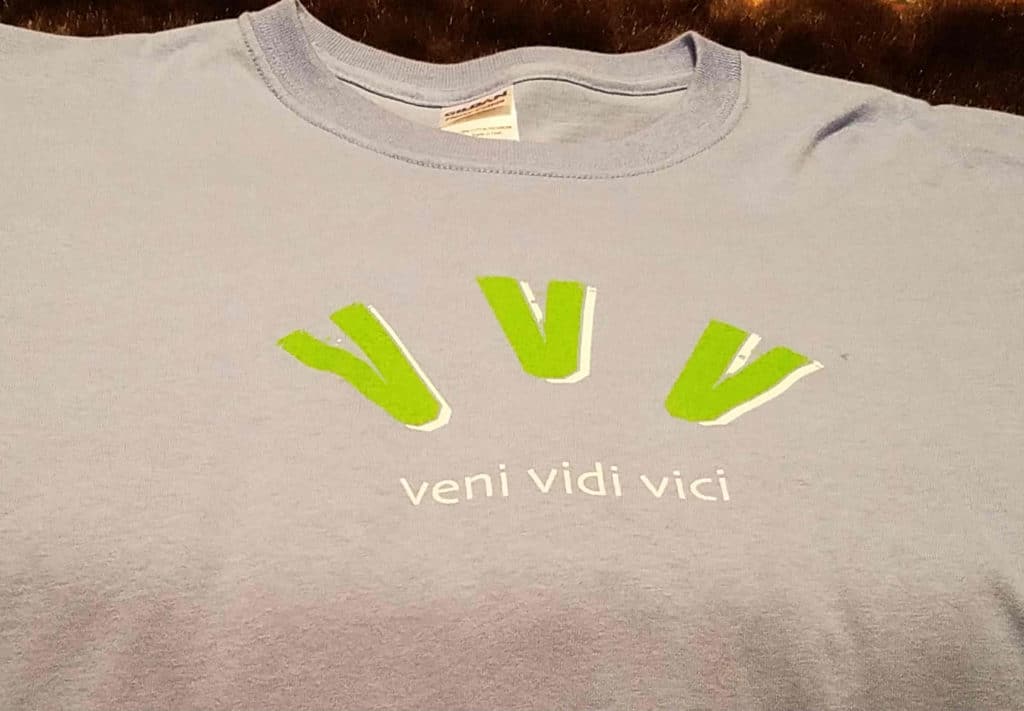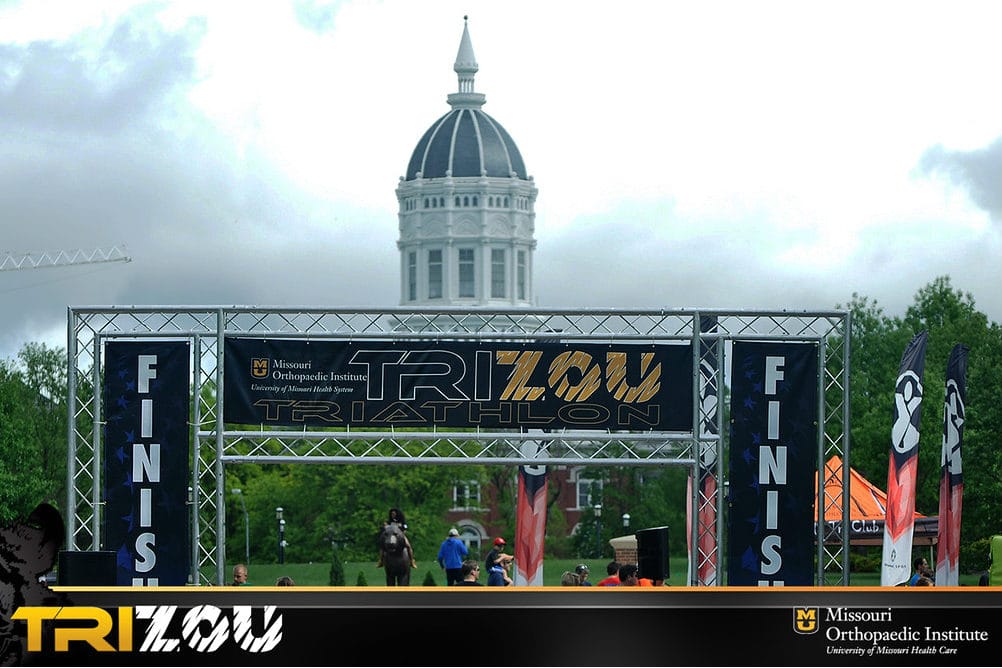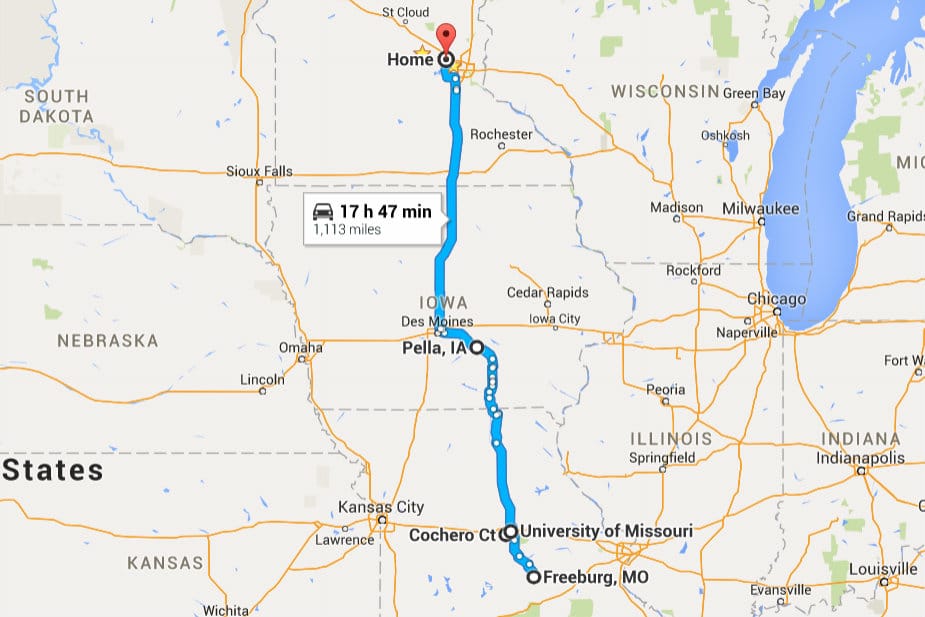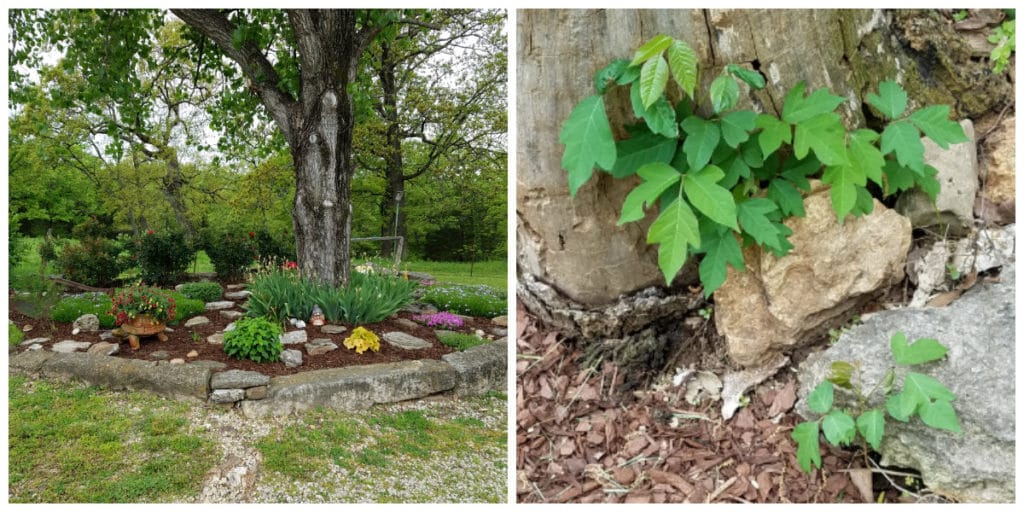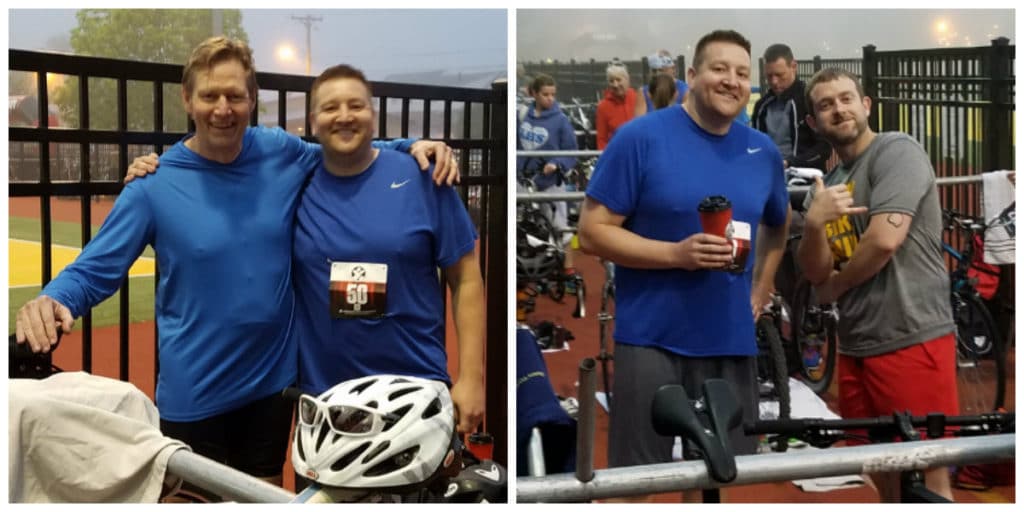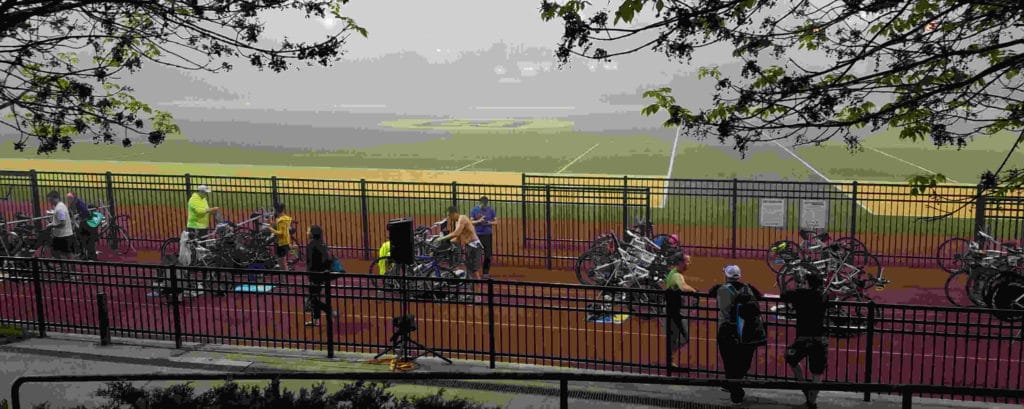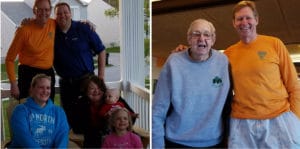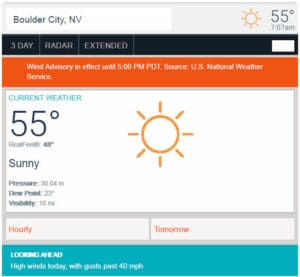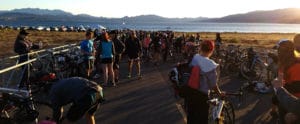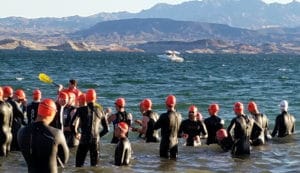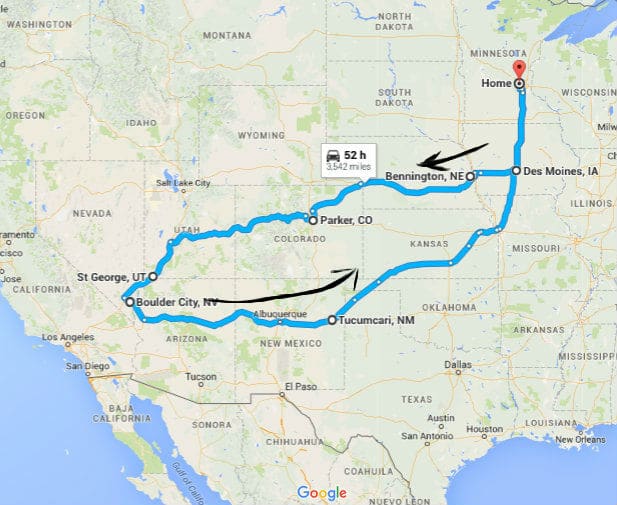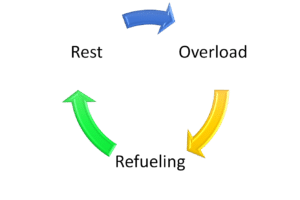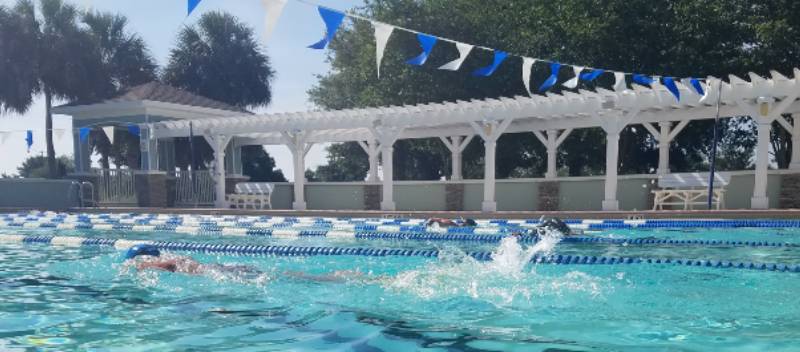Triathlon Across the USA: State #2 – South Dakota
Yankton, South Dakota; September 4, 2011—Triple V Triathlon, Lewis & Clark Recreation Area.
Historians have recorded Julius Caesar proclaiming “Veni, Vidi, Vici” following his swift and decisive victory at the Battle of Zela in 47 BC. This same Latin phrase, which literally means “I came, I saw, I conquered”, was the theme for the Triple V Triathlon.
What does this have to do with triathlon?
You’ll see as you read the story of the triathlon in the second state in the Triathlon Across the USA adventure.
Planning the South Dakota Triathlon
Having set the goal of completing triathlons in all 50 states by the time I reached age 70. I was 58.
I knew I needed to get on with it and complete races in other states. Fifty states in 12 years meant I needed to complete triathlons in over three states per year. Said another way, I needed to complete triathlons in at least three states this year.
South Dakota is one state bordering my home state of Minnesota. It also sits between Minnesota and Nebraska, home of our son, Ben.
Joy has family in Rapid City, South Dakota, near Mt. Rushmore. However, I could not find any triathlons in Rapid City scheduled for this year on an open weekend.
As luck would have it, I received an e-mail from All Sports Central advertising the Triple V Triathlon being held in Yankton, South Dakota, on the Sunday of the 2011 Labor Day weekend. We had no plans for that weekend, so on June 27, 2011, I registered for the triathlon for my South Dakota triathlon
Travel to the South Dakota Triathlon
Our trip to South Dakota started with a detour to take our granddaughter Valerie to her home in Hutchinson, MN. She had spent the previous week with us. Her school was resuming the next Tuesday, the day after Labor Day.
After dropping off Valerie, we wound our way through the flat, green, and just-plain-beautiful southwestern Minnesota countryside. We passed through an area where hundreds of wind turbines captured energy from the wind as it passed unhindered by any hills. We were certain that we had never been to this area before.
By mid-afternoon, we were in Yankton and checked into our hotel, the Best Western Kelly Inn. Our son, Ben arrived shortly thereafter.
We spent the rest of the afternoon exploring Yankton and the race venue, eventually picking up the race packet. We ate an early dinner and headed to bed, knowing that 4:30 am would come quickly.
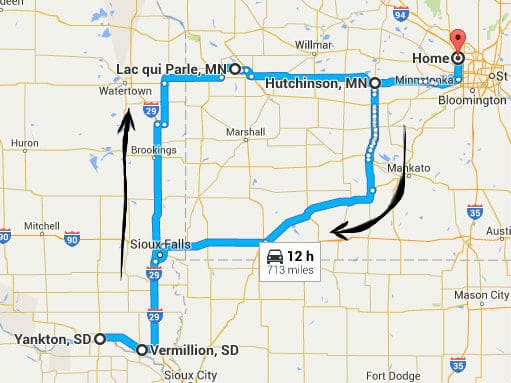
Race Day
The Lewis and Clark Recreation Area, ground-zero for the South Dakota triathlon, was six miles west of Yankton. The lake, created by Gavins Point Dam, is actually on the Missouri River, the longest river in the USA. The dividing line between the states of South Dakota and Nebraska more or less follows the center of the river.
Triple V Triathlon
The course comprised the standard distances of a sprint triathlon
- 0.25 mile (400 m) swim
- 14.3 miles (23 km) bike
- 3.1 miles (5 km) run.
Weather was perfect for a triathlon—sunny and around 60ºF (16ºC) with a light breeze.
Swim
The 0.25 mile (400 m) swim started at the boat launch of the marina. The course was simple – straight out to an orange buoy, around the buoy, and back.
The bottom of most Minnesota lakes is a mixture of mud and sand, with the occasional weed. Traction is never a problem.
In contrast, the bottom of the Missouri River, at least in this area, was clay. The bottom was slippery like glare-ice, making it difficult to walk in the water without falling. The answer was to swim in to shore as far as possible, a practice I have adopted for all open water swims.
This was also the first triathlon in which I wore a wetsuit, one I had purchased two weeks earlier. My swim cap slipped off my head about the 3/4ths of the way through the swim. I carried the cap in my right hand through the rest of the swim; it is important to never leave garbage or gear along the course. (In future races when my swim cap came off, I would tuck it into my wetsuit or triathlon suit rather than hold it in a clenched fist while I swam the rest of the distance.
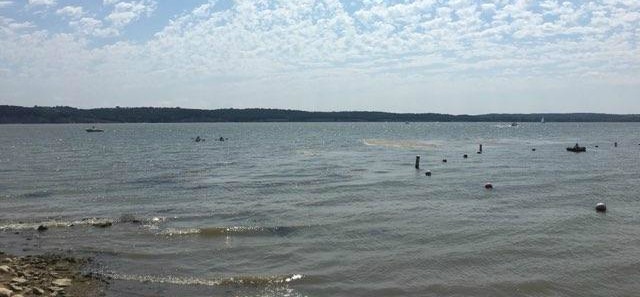
Bike
The transition area was a short distance from the boat launch. The 14.3-mile bike course left the marina through a parking lot and onto South Dakota Highway 52 eastward toward Yankton. After a short distance on Highway 52, the course took a right turn over Gavins Point Dam and into Nebraska.
The course followed the river into the south end of Yankton, crossing back over the Missouri River, winding through a residential area of Yankton, past the hospital, and back onto Highway 52 westward toward the marina and transition area.
While there were a few hills on Highway 52, the course was generally quite flat. It was also fast with an average speed of nearly 21 miles per hour (33 km per hour).
During the last half of the course, I repeatedly traded positions with a guy bearing the number 40 (his age) written in black marker on his left calf. He passed me, then I passed him. This went on for several miles. In the end, he beat me into the transition area.
After the triathlon, the 40-year-old guy came up to me and confessed: “When I saw your age, I told myself that there was no way that I was going to let you beat me.” I was flattered to have been viewed as serious competition by a person nearly 20 years my junior.
Run
The extremely flat, 3.1 miles (5 km) out and back course followed a running path along the Missouri River.
Results of the South Dakota Triathlon
I was happy with my time for this course (1:19:45). However, I was not so pleased with my place within my age group of 50-59. I ended up in 7th place of 14 within my age group, compared to 3rd place in the Maple Grove Triathlon two weekends earlier. Among all men, I finished 38th of 85.
This was a fast race. I had raced with other 50-year-olds who were much faster than me.
This was not the last time that I would be humbled.
Race Firsts
- First triathlon outside Minnesota
- First triathlon attended by our son, Ben
- Initiation of a wetsuit purchased for the open water swim
- First triathlon open water swim in a river (Missouri River)
- First triathlon in which my swim cap came off during the swim.
- The bike course was split between South Dakota and Nebraska making it my first triathlon in which I crossed state lines. To be clear, this race did NOT count as the Nebraska triathlon, which would be state #29.
Return trip
The return trip provided the ideal opportunity to visit Joy’s cousin, Tom, in Watson, Minnesota, also known as “The Goose Capital of the World”.
After a dinner of New York strip steak, spinach salad with bleu cheese, and mashed potatoes, the typical meal with cousin Tom, we returned home.
Lessons
At the beginning of this post, I asked what the phrase “Veni, Vidi, Vici” has to do with triathlon.
The Triple V Triathlon was a quick and definitive personal victory. First, it was an important step toward Joy’s and my goal of completing a triathlon in each state by age 70. Secondly, I finished a sprint triathlon in a time I never imagined one year earlier, before starting the training for my first race.
Two states down – 48 to go.
Have You Done a Triathlon in South Dakota?
While not being large, South Dakota has incredibly diverse geography. The area of the triathlon is dominated by the wetlands of the Missouri River. Further west, you will find the Black Hills and the iconic Mount Rushmore. Travel north and you will find almost unbelievably large corn fields.
Let us know about any triathlons you have done in South Dakota.
Comments: Please note that I review all comments before they are posted. You will be notified by email when your comment is approved. Even if you do not submit a comment, you may subscribe to be notified when a comment is published.

